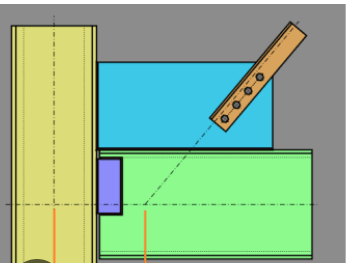MegaStructures
Structural
- Sep 26, 2019
- 376
Hello,
I am trying to determine if it's possible to use an effective length factor less than 1.0 for a double angle bolted to a 1/4" gusset plate. The gusset plate is welded on both sides to a column and a beam. I feel that the length of the member should be measured from center of bolts to center of bolts and the effective length factor should be based on the rotational stiffness of the gusset plate.
First, I want people's thoughts on this approach and if it seems reasonable or unreasonable. Second, I'm looking for a reference that covers this topic (research paper or otherwise) that recommends an effective length factor based on empirical data.

“The most successful people in life are the ones who ask questions. They’re always learning. They’re always growing. They’re always pushing.” Robert Kiyosaki
I am trying to determine if it's possible to use an effective length factor less than 1.0 for a double angle bolted to a 1/4" gusset plate. The gusset plate is welded on both sides to a column and a beam. I feel that the length of the member should be measured from center of bolts to center of bolts and the effective length factor should be based on the rotational stiffness of the gusset plate.
First, I want people's thoughts on this approach and if it seems reasonable or unreasonable. Second, I'm looking for a reference that covers this topic (research paper or otherwise) that recommends an effective length factor based on empirical data.

“The most successful people in life are the ones who ask questions. They’re always learning. They’re always growing. They’re always pushing.” Robert Kiyosaki
